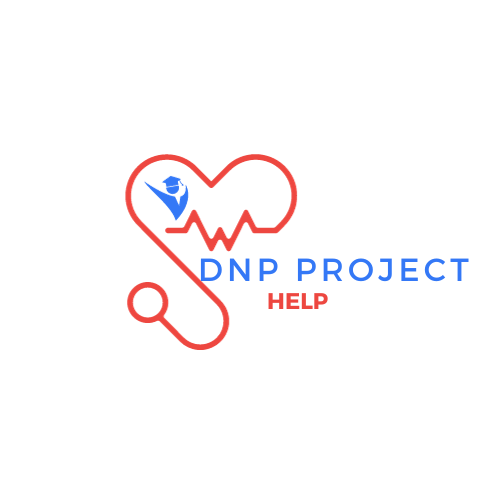
Introduction
The World Health Organization acknowledges access to quality and timely healthcare services as a fundamental human right, ensuring that all citizens can access healthcare without discrimination (World Health Organization, 2023). Therefore, governments have a responsibility to establish measures guaranteeing patients receive cost-effective, timely, and high-quality healthcare services.
This paper will discuss healthcare system concepts such as access, cost, quality of the environment, and recent quality initiatives aimed at improving healthcare systems and service delivery. It will also highlight the relationship between quality measures and evaluation and role development, including how a lack of effective quality measures affects the role of Advanced Practice Nurses (APNs) (World Health Organization, 2023).
Access, Cost, and Recent Health Initiatives.
The Institute of Medicine (IOM) says access to healthcare means being able to get healthcare services quickly so you can be as healthy as possible. It also means being able to get things like check-ups, diagnoses, and treatment when you need them. Access includes four parts: having insurance (coverage), getting care on time (timeliness), having enough doctors and nurses (workforce), and having places to get care (services). These things decide if someone can get healthcare when they need it or not (Agency for Healthcare Research and Quality, 2023).
Having coverage means having health insurance, which helps you get into the healthcare system. Healthcare is very expensive, so having insurance helps because it pays for most of the costs. People without insurance often can’t get into the healthcare system and can end up being less healthy.
The services and timeliness parts mean there’s a regular place for you to go when you need healthcare and that you get the right healthcare quickly when you need it. Having enough qualified doctors and nurses is important too. Places where there aren’t enough healthcare workers often have fewer healthcare options, which can make people in those areas less healthy (Agency for Healthcare Research and Quality, 2023).
Cost in healthcare means different things depending on who is paying for the services. But generally, it means how much money is paid or charged to get a service or a product. Cost in healthcare is looked at from three sides: the people or organizations paying for the healthcare (like insurance companies), the healthcare providers (like hospitals or doctors), and the patients themselves.
From the viewpoint of the people or organizations paying for healthcare, like insurance companies, the cost includes the money they give to healthcare providers for the services given to the people they cover. In the U.S., there are two main types of health insurance: public, which is given by the government, and private, which is given by other companies. Public health insurance includes programs like Medicare, Medicaid, and insurance for children. The government also has optional programs for visitors and international students. Private insurance is offered by other companies who have different plans for their customers to choose from (Getzen & Kobernick, 2022).
From the viewpoint of the healthcare providers, like hospitals or doctors, the cost includes the money they spend directly or indirectly to provide healthcare services. This includes things like the cost of equipment used for care, the cost of medicines, utilities like electricity, and costs for administration, among other things (Getzen & Kobernick, 2022).
From the patient’s point of view, healthcare costs include things like deductibles, co-payments, what patients have to pay for services not covered by insurance, and costs when they go to doctors or hospitals that aren’t in their insurance network. Patients without insurance have to pay for everything themselves, which can be really expensive and makes it hard to get healthcare (Getzen & Kobernick, 2022).
Quality healthcare means that the care you get makes it more likely you’ll get better and follows what experts recommend. The World Health Organization (WHO) says good healthcare should be effective, safe, and focused on the patient. Effective means you get care that’s based on what works best; safe means the care doesn’t hurt you, and patient-centered means the care fits your needs and values (World Health Organization, 2023).
Good healthcare should also be timely, meaning you get care when you need it, so your condition doesn’t get worse. It should be fair, meaning everyone gets the same quality of care, no matter their gender, culture, how much money they have, or where they live. Healthcare providers should always act professionally and be ready to change how they give care to fit each patient’s needs. Healthcare should cover everything from when you’re born to when you’re old, and it should use resources wisely so that everyone gets the best care possible. High-quality healthcare helps patients get better and reduces the chances of getting really sick (Center for Medicaid and Medicare Services, 2021).
Recent Quality initiatives
There are many efforts to make healthcare better. One of these is the Hospital Quality Initiative (HQI) started by the Center for Medicare and Medicaid (Medicaid.gov, 2023). The goal of this initiative is to make healthcare services better and give clear information about how well hospitals are doing. This helps patients see how hospitals are performing and choose where to go for healthcare. It also rewards hospitals that do a good job (Medicaid.gov, 2023).
One way to make healthcare better for women and babies is through the Maternal and Infant Health Initiative (MIHI) by Medicaid. This started in 2014 and continued with a second phase in 2020. MIHI wants to make sure pregnant women, new moms, and babies get good care. It works with healthcare places to make sure they know how to give good care after a baby is born, to reduce the number of cesarean births for low-risk pregnancies, and to make sure babies have their well-child checkups (Medicaid.gov, 2023).
Another effort is by the Joint Commission, which has programs like ORYX®. These programs collect data on how well healthcare places are doing and compare it to the standards they should meet. This helps make sure healthcare places that want to be accredited or stay accredited are giving good care to their patients.
State governments and healthcare places also have their own plans to make care better. For example, L.A.’s healthcare plan wants to give good care to families who need it. Their plan, running from 2022 to 2024, helps them keep an eye on how good, safe, and fair the care they give is. Healthcare places work on ways to improve how they give care so patients have better outcomes (Center for Medicaid and Medicare Services, 2021).
Relationship between quality measures and evaluation and role development
Quality measures are like rules that show how well healthcare places are doing. They look at things like how patients are doing, how healthcare is given, and what patients think about it. Quality measures are really important because they make sure patients are safe and that healthcare resources aren’t wasted or used badly. They also help find places where healthcare can be better and make sure patients get better results (Moody-Williams & Moody-Williams, 2020).
There are four types of quality measures. Outcome measures check how healthy patients are. Process quality measures look at if healthcare providers are following the rules and doing things to help patients get better. Structural measures check if healthcare places have what they need to give good care. Balancing measures check if the changes made to improve quality in healthcare places are working well (Moody-Williams & Moody-Williams, 2020).
Evaluation means looking at things carefully and in a planned way. It involves collecting and studying information, both in words and numbers, to help make decisions or make things better. Role development means getting better at what you do so you can give good healthcare to patients (BRYKCZYNSKI, 2022).
Nurses play a big part in making healthcare better and safer. They look at different ways healthcare is given, how systems work, and how care is delivered. By looking at quality measures, nurses can see how things are going in their healthcare place. They can figure out if the way things are done is working well or if it needs to change. They can also see how patients are doing because of the care they get. With this information, nurses can find out what areas need to get better and learn more about those areas. For example, if a quality measure shows that the rules in the healthcare place aren’t helping patients get good care, nurses can learn more about making better rules (BRYKCZYNSKI, 2022).
How the role of the APN might change without effective quality measures.
Advanced practice nurses (APNs) play a big role in giving good healthcare to patients and everyone else. For them to keep giving good care, it’s really important to have good ways to measure how well they’re doing. These measures help APNs know how well they’re doing their job so they can make the right choices to make care better. If the measures aren’t good, they won’t show how well APNs are doing their job. This makes it hard for APNs to see what’s not working well in giving care and how patients are doing. So, they can’t do their job well, which makes healthcare places less safe and patients not do as well (BRYKCZYNSKI, 2022).
Conclusion
Access, cost, and quality are very important parts of healthcare. Access means being able to get healthcare when you need it. Cost is how much money you have to pay for healthcare. Cost affects access because people with less money or no insurance often can’t get as much healthcare. Quality measures are really important because they help healthcare providers see how well they’re doing and make decisions to make care better. Advanced practice nurses (APNs) can also use these measures to learn more and grow in their nursing careers. But it’s really important to make sure these quality measures are good and give accurate information so that decisions made using them are the right ones.
References
Agency for Healthcare Research and Quality, (2023) Chartbook on Access to Health Care: Elements of Access to Health Care Retrieved from: https://www.ahrq.gov/research/findings/nhqrdr/chartbooks/access/elements.html
BRYKCZYNSKI, C. L. M. K. A. (2022). Role development of the advanced practice nurse. Hamric & Hanson’s Advanced Practice Nursing-E-Book: An Integrative Approach, 98. https://books.google.co.ke/books?hl=en&lr=&id=6nJ
Center for Medicaid and Medicare Services, (2021) Quality Measures Retrieved from: https://www.cms.gov/Medicare/Quality-Initiatives-Patient-Assessment-Instruments/QualityMeasures
Getzen, T. E., & Kobernick, M. S. (2022). Health economics and financing. John Wiley & Sons. https://books.google.co.ke/books?hl=en&lr=&id=
Medicaid.gov, (2023) Quality Improvement Initiatives Retrieved from: https://www.medicaid.gov/medicaid/quality-of-care/quality-improvement-initiatives/index.html
Moody-Williams, J., & Moody-Williams, J. (2020). Quality Measures for Patient, Family, and Caregiver Engagement. A Journey towards Patient-Centered Healthcare Quality: Patients, Families and Caregivers, Voices of Transformation, 61-69. https://link.springer.com/chapter/10.1007/978-3-030-26311-9_6
World Health Organization, (2023) Quality of care Retrieved from: https://www.who.int/health-topics/quality-of-care
Must Read:


